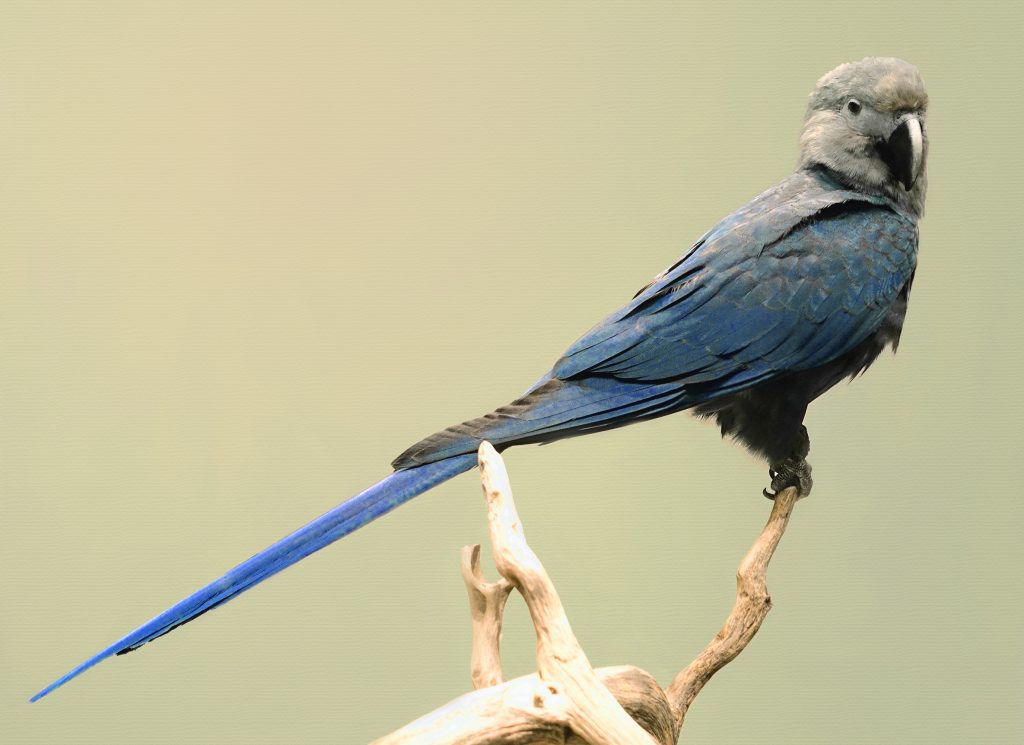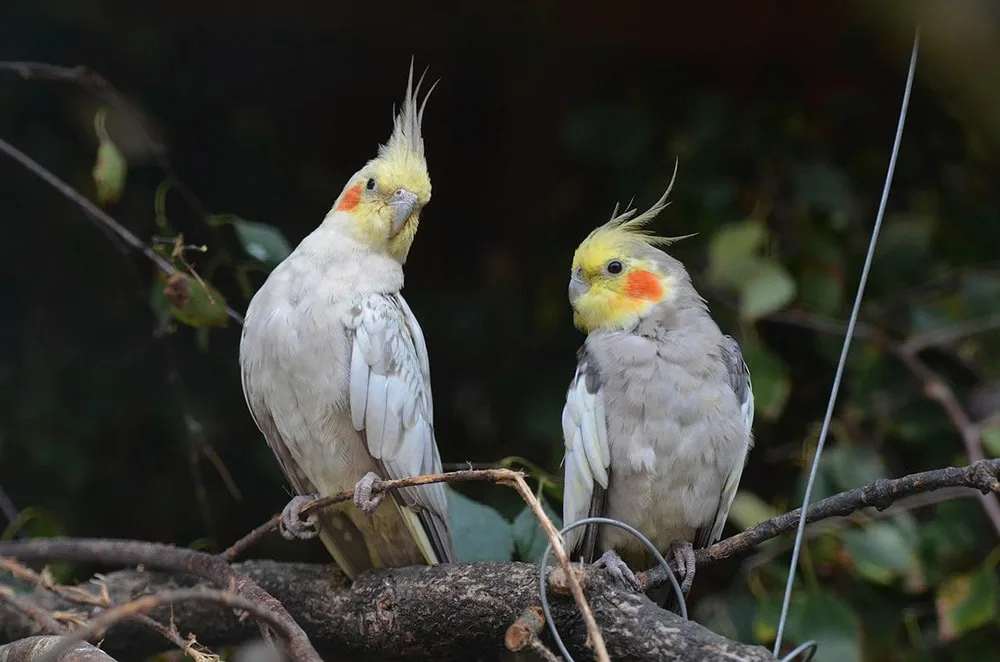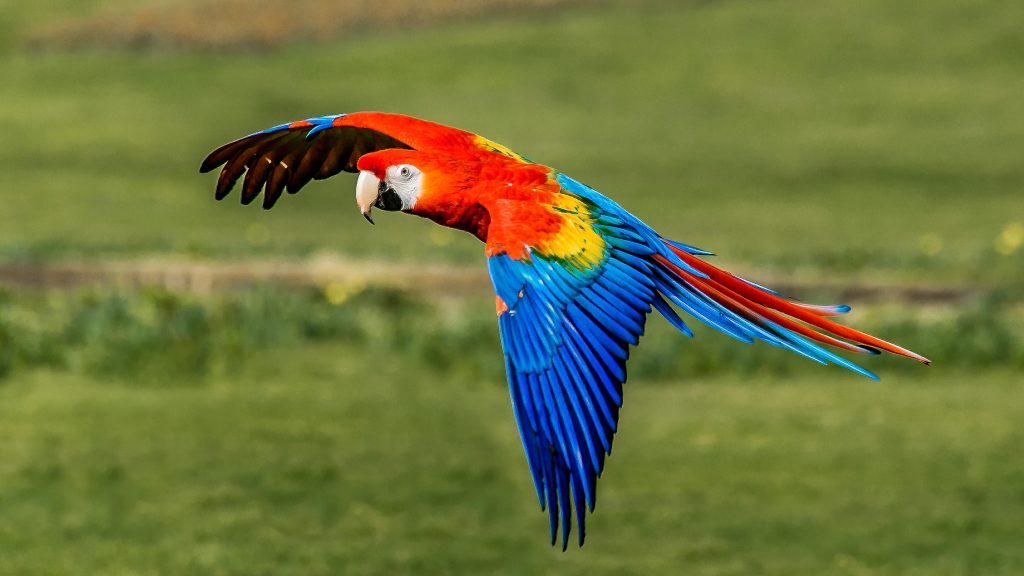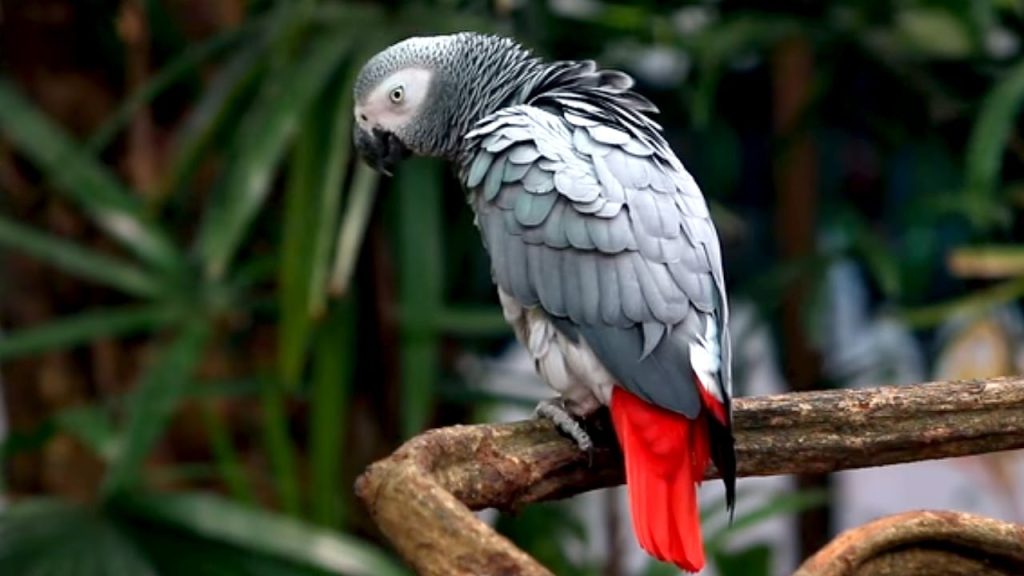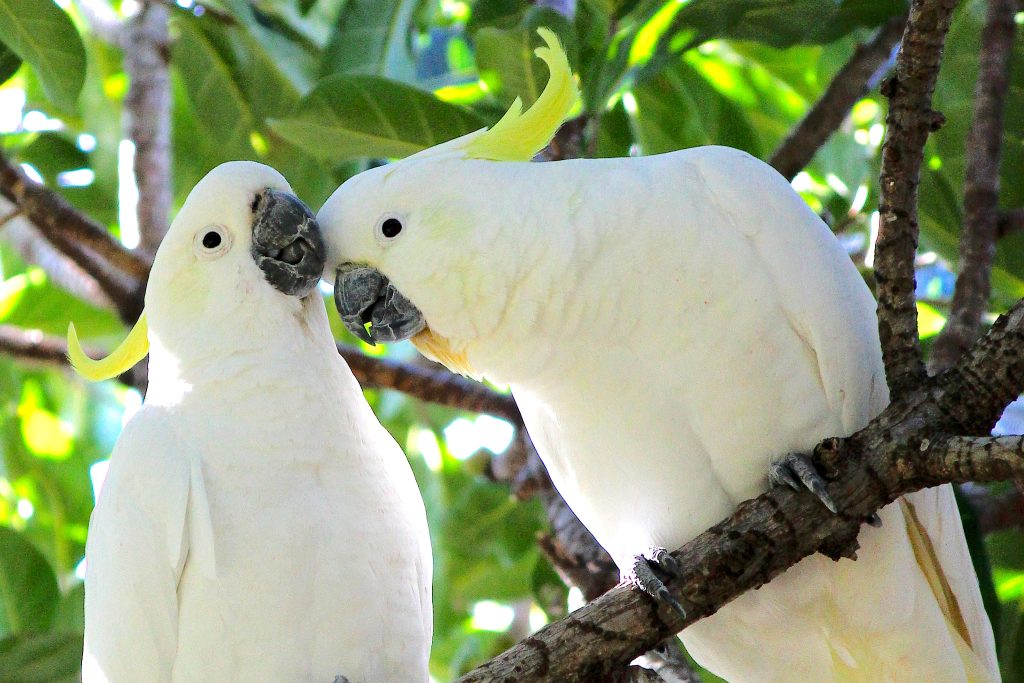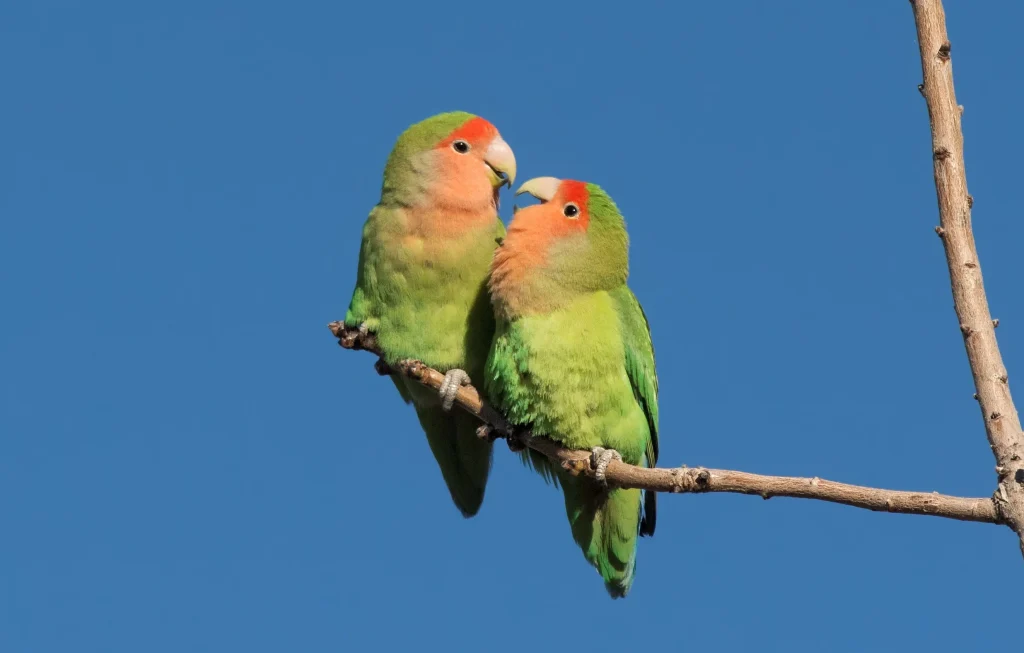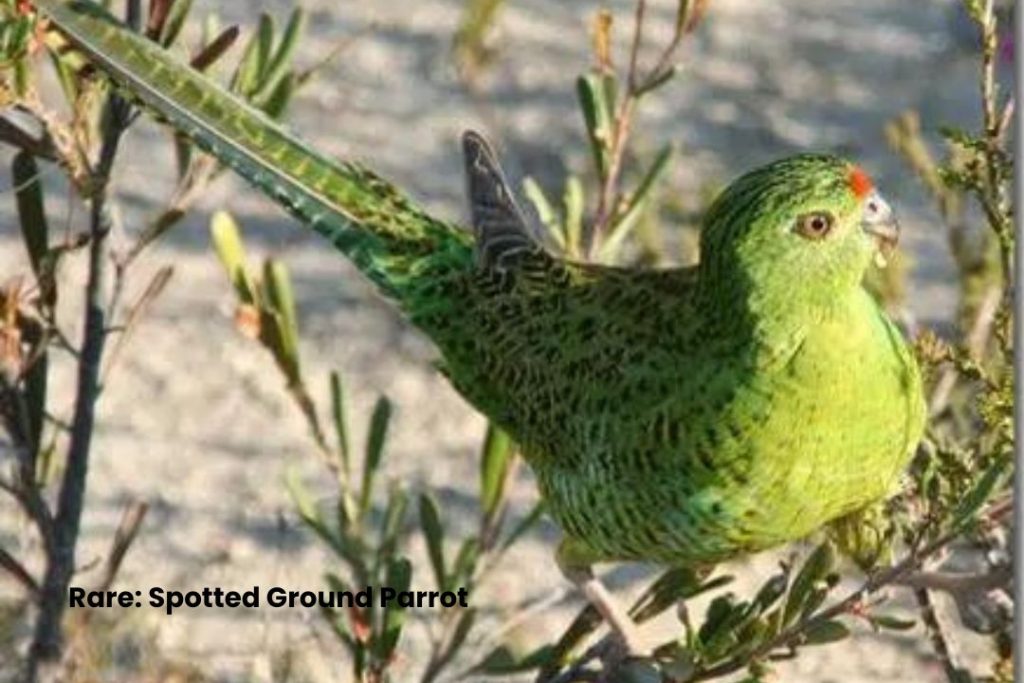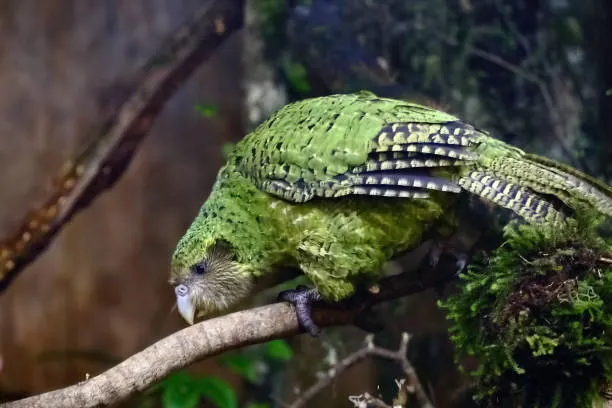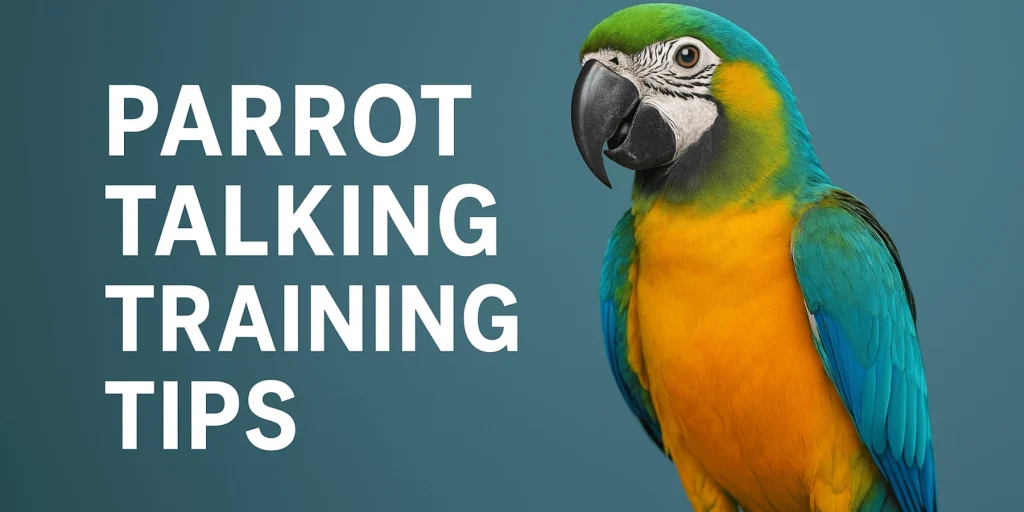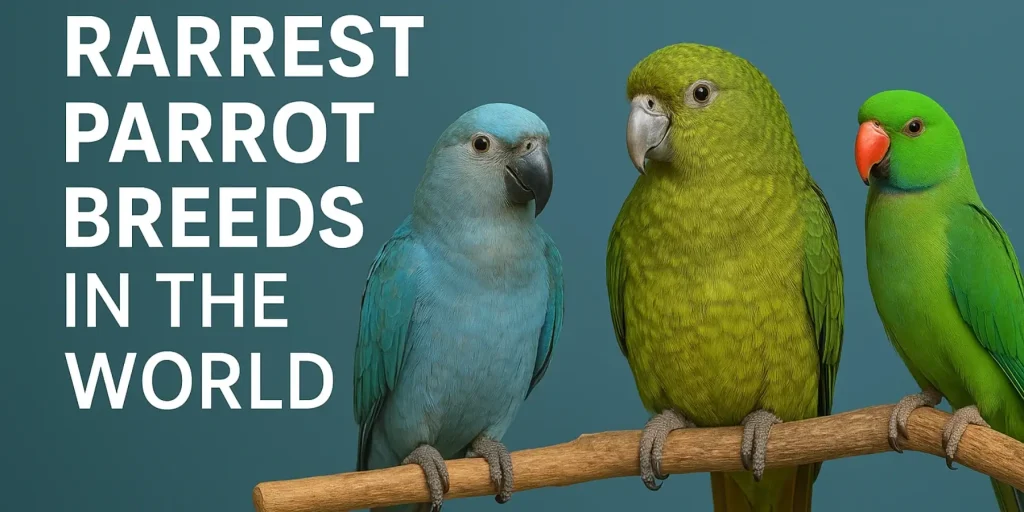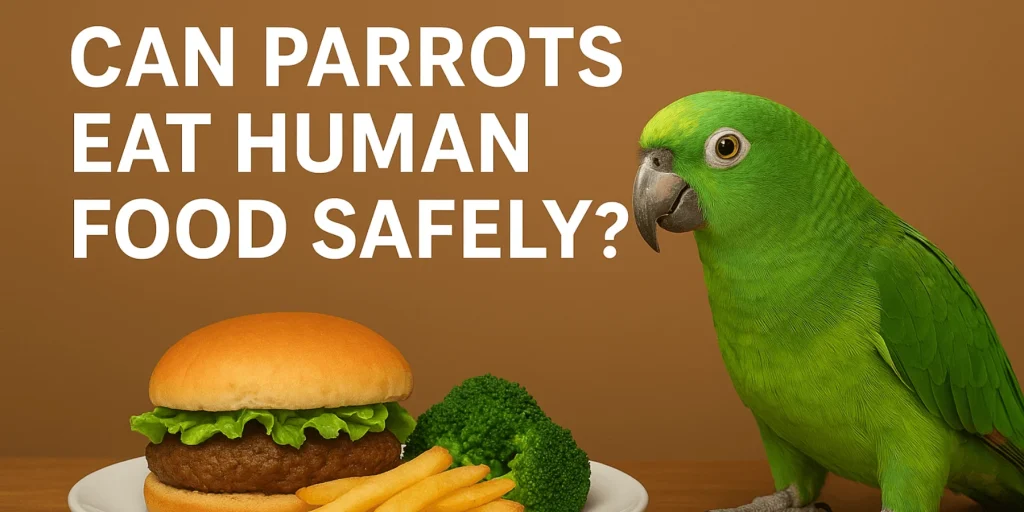Here’s some more information about a few of the rare and endangered parrots breeds:
Spix’s Macaw (Cyanopsitta spixii)
Also known as the “Little Blue Macaw,” Spix’s Macaw is a strikingly blue rare parrot breed that was once believed to be extinct in the wild. It was last seen in the wild in the early 2000s. However, a small population was discovered in Brazil, and efforts to reintroduce the species into its native habitat have been ongoing. Habitat destruction and illegal trapping for the pet trade were major factors contributing to its decline.
Kakapo (Strigops habroptilus)
The Kakapo is a large, flightless rare parrot breed native to New Zealand. It is primarily nocturnal and herbivorous, feeding on fruits and seeds. The Kakapo’s population declined dramatically due to habitat destruction and the introduction of predators like rats and stoats. Conservationists have implemented intensive management and recovery programs to protect and breed these rare parrots breeds, and their numbers have gradually increased.
Lear’s Macaw (Anodorhynchus leari)
Lear’s Macaw is a striking blue rare parrot breed found in a small area of northeastern Brazil. Habitat loss and illegal trapping for the pet trade posed significant threats to its population. Conservation efforts, such as the establishment of protected areas and nest protection programs, have led to an increase in the wild population.
Puerto Rican Amazon (Amazona vittata)
This rare parrot breed is endemic to Puerto Rico and was once on the brink of extinction, with fewer than 30 individuals remaining in the wild at one point. Conservationists have implemented captive breeding programs, habitat restoration efforts, and the control of invasive species to protect and bolster the rare parrots breeds population.
Spotted Ground Parrot (Pezoporus maculatus)
The Spotted Ground Parrot is a ground-dwelling rare parrot breed native to Australia. It is known for its cryptic and elusive behavior, making it difficult to study and protect. Habitat degradation and introduced predators have contributed to its decline. Conservation efforts involve habitat restoration and monitoring to better understand and protect this rare parrots breeds species.
Philippine Eagle (Pithecophaga jefferyi)
While not a parrot, the Philippine Eagle is a critically endangered raptor and one of the largest eagles in the world. It is endemic to the Philippines and faces threats from habitat loss and hunting. Conservation initiatives focus on protecting its remaining habitat and raising awareness about its conservation needs.
Maroon-fronted Parrot (Rhynchopsitta terrisi)
Found in Mexico, the Maroon-fronted Parrot is a medium-sized rare parrot breed with a distinctive maroon-colored forehead. It is threatened by habitat destruction and illegal trapping. Conservation programs aim to protect its habitat and reduce poaching of this rare parrot breed.
Efforts to conserve these and other rare parrots breeds involve a combination of habitat preservation, anti-poaching measures, captive breeding programs, and public awareness campaigns to promote their conservation and ensure their long-term survival in the wild.
Rare Parrots Breeds FAQ’s
Certainly, here are some frequently asked questions (FAQs) about rare parrot breeds:
What are rare parrot breeds?
Rare parrot breeds are parrot species that have limited populations and are at risk of becoming extinct. These parrots are often characterized by unique traits, colors, or behaviors that make them stand out.
Why are some parrot breeds considered rare?
Parrot breeds become rare due to various factors, including habitat destruction, illegal poaching for the pet trade, introduced predators, and changes in their natural environments. These factors can significantly reduce their numbers.
What are some examples of rare parrot breeds?
Some examples of rare parrot breeds include Spix’s Macaw, Kakapo, Lear’s Macaw, Puerto Rican Amazon, and the Maroon-fronted Parrot, among others. These species face significant conservation challenges.
How are rare parrot breeds protected?
Conservation efforts for rare parrot breeds typically involve habitat preservation, anti-poaching measures, captive breeding programs, and public awareness campaigns. Protected areas are often established to safeguard their natural habitats.
What is the role of captive breeding programs in conserving rare parrot breeds?
Captive breeding programs play a crucial role in conserving rare parrot breeds. They involve breeding parrots in controlled environments to increase their populations and provide a safety net in case wild populations decline further.
What can I do to help conserve rare parrot breeds?
You can support conservation organizations and initiatives dedicated to protecting rare parrot breeds. Additionally, avoiding the purchase of parrots from the illegal pet trade and promoting awareness of the conservation challenges they face can make a difference.
Are there success stories in the conservation of rare parrot breeds?
Yes, there have been success stories in the conservation of rare parrot breeds. Some species, such as the Kakapo and Spix’s Macaw, have seen population increases through conservation efforts.
How can I learn more about rare parrot breeds and their conservation?
You can learn more about rare parrot breeds and their conservation by researching reputable conservation organizations, visiting wildlife sanctuaries, and reading articles and books on the subject. Supporting these organizations financially can also contribute to their efforts.
What are the major threats to rare parrot breeds today?
Major threats to rare parrot breeds include habitat loss, illegal poaching for the pet trade, introduction of invasive species, and climate change, which can affect their natural habitats and food sources.
Where can I see rare parrot breeds in the wild or in captivity?
Rare parrot breeds can sometimes be observed in the wild by visiting specific natural habitats or protected areas where they are found. Additionally, some zoos, aviaries, and wildlife rehabilitation centers may have rare parrot breeds on display as part of their conservation efforts.
